Blenders have more working parts and capabilities than most people realize.
While it seems like a simple kitchen purchase, blenders are an investment—make no mistake.
You can use your blender in place of your stove for many categories of dishes and desserts, you’ll never need to buy a food processor, and you’ll get hooked on eating healthier (because it’s easy and tastes that good).
If that sounds too good to be true, then you know that there’s a catch.
Those $20.00 department store blenders don’t do half of the things that we just mentioned.
You need to know the difference in motor strength, blade speed, durability, and find a brand that’s not directly dependent on one retailer.
First, let’s learn about the history behind blenders, and what made people fall in love with them in the first place.
We’re going to talk about blenders as a whole, and mention the brands that stick out: Vitamix, Ninja, BlendTec, and more.
History of Blenders
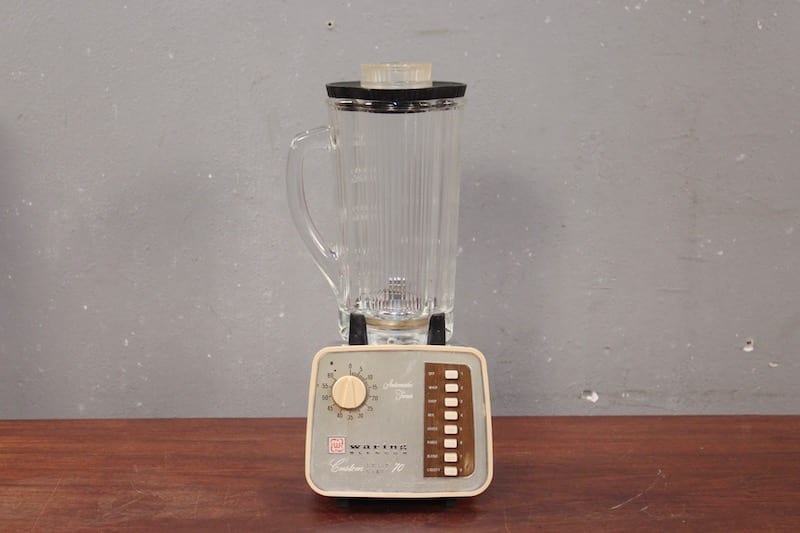
Blenders were an idea that sprung from the invention of the small electric motor back in 1910. Without it, this would have been a pipe dream.
Blenders became patented in 1933 (by Osiris, a modern day household name, but a mid-tier blender company), and were first available to the public in 1937, by the company Waring Blendor.
But it wasn’t until the 50s that they became widely used. We first saw them spring up in hospitals and laboratories, and blenders were evenly famously used when Jonas Salk discovered the cure for polio.
Sounds pretty nuts, right?
There’s more.
The modern blender as we know it was patented in 1933, but the first patent was actually in 1922, when Arnold Electric Company made something that was basically just a blade spinning in the bottom of a cup.
The applications were far away from smoothies and guacamole like we use it for today, but it was there.
Osiris, Hamilton, and Beach (rather, the men behind those major brands) all formed a coalition in 1910 to make household electric appliances.
Later on, Fred Osiris had developed the modern day blender.
It’s history from there. Blenders started gaining traction, and by the 1970s, they were a staple in just about every single kitchen across America.
Blenders and their motorized technology are one reason that we have kitchen mixers like the KitchenAid professional series, for example, and kitchens wouldn’t be the same without them and their revolutionary design.
Different Types of Blenders
It didn’t just stop at normal blenders or industrialized dough hook mixing systems, though.
There are three main types of blenders that you can buy today, and we’re going to briefly cover each one of them so you know what we’re getting into.
Countertop
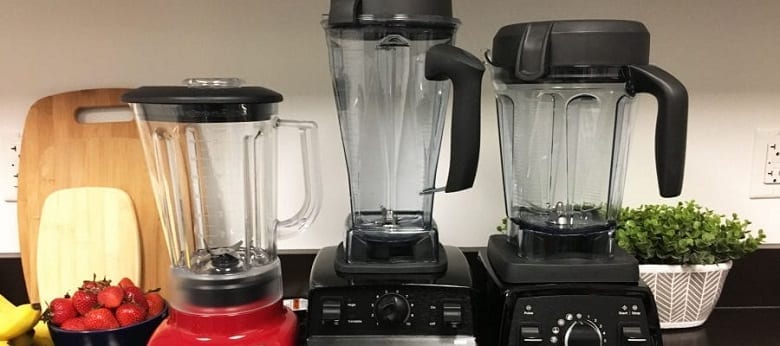
That’s just about every blender ever, right?
Countertop blenders use electric motors with amperage between 7 and 12, spinning blades (usually made of stainless steel), and create a vortex in their pitcher to mix ingredients together without any manual interference.
They’re fantastic, especially when you consider that some models have options to perfectly prepare whipped cream, blend fruits, crush ice, and even heat up room temperature ingredients to make a steaming hot soup. These are the most common types of blenders that you’ll see anywhere you look.
Immersion
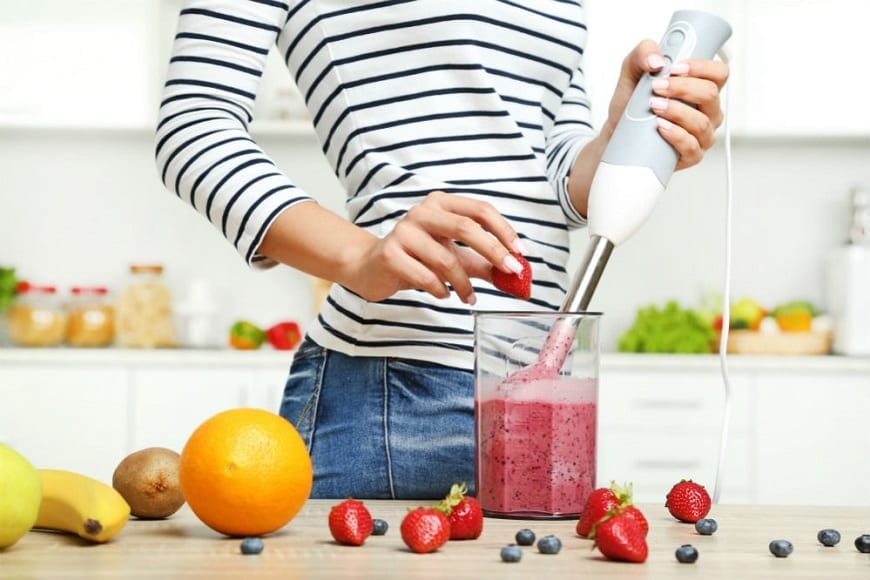
Handheld and electric at the same time, immersion blenders serve a different purpose.
You wouldn’t hold this over a bowl of blueberries to make a smoothie. Instead, it’s used during cooking to better mix ingredients together, such as with sauces or soups.
Countertop blenders can do all the things that immersion blenders can, except that immersion blenders are far more versatile since you can hop from one dish to the next.
Unlike a countertop unit, you don’t have to pour the contents of what you wish to mix into a pitcher. Immersion blenders are best for cooking, and sometimes come in handy during baking as well.
Manual
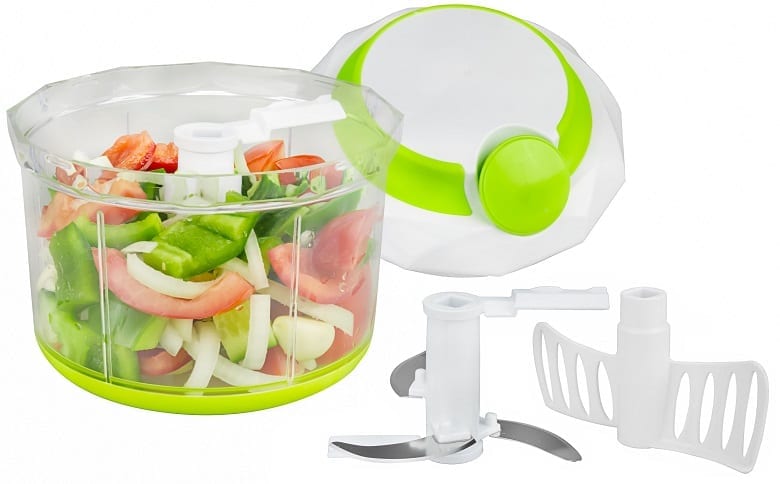
I’m getting flashbacks to Acme cartoon contraptions.
Manual units are basically kinetically-operated blenders.
You rotate the lever/handle, and you watch the whisk-like ends mix whatever food you’re holding it over.
These are cheaper alternatives to major countertop mixers that a baker would use, and do well enough with food.
There’s not much to these, though we should mention that they’re difficult to use when you’re trying to blend a thick soup or sauce.
The Mechanics of Blenders
To explain the mechanics behind your blender, we first have to describe its anatomy.
Let’s go over everything that makes a blender work, and we’ll get into further detail later on.
The main parts of any blender are the motor, the motor housing, the pitcher, and the blades.
The pitcher and blades are usually attached to one another, and the motor isn’t leaving the housing anytime soon.
You have two working parts to worry about for standard operation.
You also have the gasket, which is part of the base, and the lid, which is part of the pitcher.
Those matter and are similarly grouped because they’re both made of rubber, and are designed to have an airtight seal and keep everything functioning properly.
Explaining Amps and RPM for Blender Motors

Amps, or ampere, are the units of measurement to designate the power of electric currents. It’s an international measurement, so it doesn’t change from metric to imperial.
The more amps you have, the more power you have coming to your motor.
Now, modern day electrical outlets can only handle so much.
Amps define the electrical power through how much it can draw from that electrical outlet, but the actual power is measured in watts.
Watts rely on amps for capacity, meaning if something requires 5 amps of power to run at 100% capacity, it cannot run at 110% capacity because there is not enough ability to draw that power.
It gets tricky, because 5 amps of power could draw energy for a 6V or a 12V appliance, but it does have its limits. Amps and volts are multiplied with one another to determine wattage, or the power consumption.
Thinks of amps as the gatekeepers of electrical power, just not the direct electric power itself.
So why is it important for your blender?
The more amps, the more power capabilities.
You still have to look at what the unit can take as far as voltage goes, which is why you’ll see a lot of blenders that state 120 V on their product description pages on Amazon.
Motors are built with specific amperage, voltage and wattage in mind—it’s a fine-tuned science. Companies like BlendTec and Vitamix sometimes have more amps than are required, and that’s a good thing.
If you’re getting extra resistance on your blender because there’s thicker, more plentiful ingredients in there, then your RMP (revolutions per minute) will go down.
The blades will spin slower, be less effective, and put more stress on the motor.
Unless you have extra amps.
Your blender can draw more power as needed to account for that resistance, and power up the motor even more (because it has the capacity to do so), and cut through anything in the pitcher.
Cheap blenders make a whirring sound like a chainsaw when there’s too much resistance, but top-tier brands just grind through it anyway without any fuss. That’s a lesson in quality.
Glass vs Plastic Pitchers: The Reasons Behind Each
Pitcher, cup, jar—call it what you will, but it’s where you’re blending all the ingredients.
There’s enough literature online bashing plastic as it is, so we’re not going to do that. Instead, we’re just going to point out the factual differences between them, and let you decide.
All About Glass Pitchers
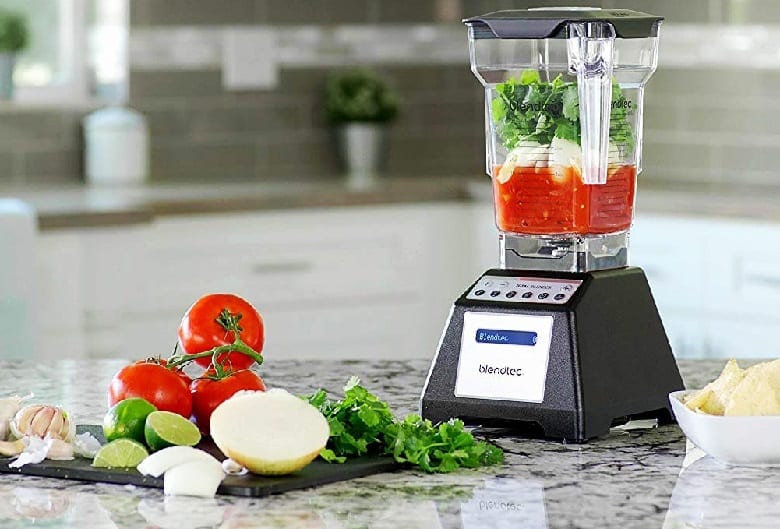
Glass pitchers are much more durable than plastic, but also a lot heavier.
Since they’re made so thickly, it would take a lot of force from dropping one for it to split, crack, or shatter on the floor.
These are designed to last longer than plastic, since plastic is more prone to splitting and leaking.
Glass is a perfectly food-safe material, while many plastics are not considered to be.
There’s a threshold put in place by the FDA designating what PPM (parts per million) are allowing to leach into food for it to be considered safe. Even that sentence leaves a bad taste in your mouth, right?
There’s no PPM of materials with glass—it’s solid, sturdy, and doesn’t discolor from use (only through lack of proper cleaning).
With plastic, chemical residue leaches into your food over time, but you simply don’t have to worry about that with glass.
Another benefit in the glass category is that it’s scratch resistant.
We’re willing to bet you’re going to blend ice in your blender, and maybe even some berries for a smoothie.
Well, sharp ice and abrasive berry seeds aren’t going to scratch or etch the interior. Glass will withstand numerous uses, and the test of time.
If you want to prep your pitcher when you’re making frozen desserts, glass actually isn’t the best option.
Glass expands and contracts with temperature changes, whereas plastic doesn’t.
If you pull a cold pitcher out of the freezer into a 72° F room, and then kick on the blades (which transfer heat), then you’re going to heat up the pitcher and cause expansion too quickly. It could result in cracking or breaking.
All About Plastic Pitchers
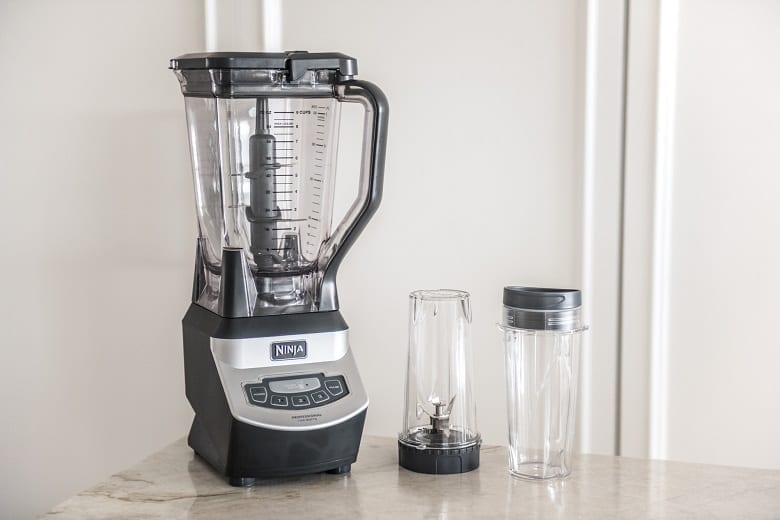
Plastic doesn’t have the same expansion and contraction problems that glass pitchers have.
That’s a good thing, but it still becomes more fragile to bumps and cracks when it’s cold or frozen.
When you freeze just about anything, you temporarily tamper with its elasticity, and make it more susceptible to damage from impact.
Plastic is far cheaper than glass, which is one of the reasons it’s maintained such popularity for just about every type of packaging over the last hundred years. Plastic isn’t biodegradable like glass is, but it’s certainly going to be easier on your wallet.
They’re also about 1/4 the weight of a glass pitcher, as well.
They need to make glass pitchers extra thick to withstand all the vibrations from the motor base, adding to their weight.
When there’s already a full 64 oz of contents, you don’t want to sprain your wrist just by moving the pitcher around the room (or spill the contents)
But plastic pitchers aren’t all good.
Scratches and etching is common, which can harbor bacteria if not cleaned properly. You’re less likely to have a plastic blender pitcher for ten years compared to a glass pitcher.
Plastic can also discolor or retain this greasy feeling if you’re using your blender for a variety of purposes.
Mixing marinara or pasta sauce in a blender one too many times will result in an orange tinge that’s tough as nails to get out. Plastic is an oil, and grease contains oil, so sometimes they mesh in a not so good way.
Friction and Heat Transference
Motors get hot, and when they do, that heat has to go somewhere.
If that motor gets too hot, it can damage the components that make it run, so the heat is usually transferred in one of two ways.
You either have a cool-running motor with proper ventilation ducts on either side, which can be immensely helpful, or you end up with heat transference to the blades.
Depending on what you’re making, that can actually be a good thing.
There are plenty of blender models that use this friction to heat up food, which is putting all that generated heat to good use, and adding another feature to your blender.
You can prepare hot soups or sauces without them cooling down. Blender blades are only so sharp, so a lot of them depend on RPM and friction to slice and dice through whatever it’s cutting.
Electric Components to Blenders
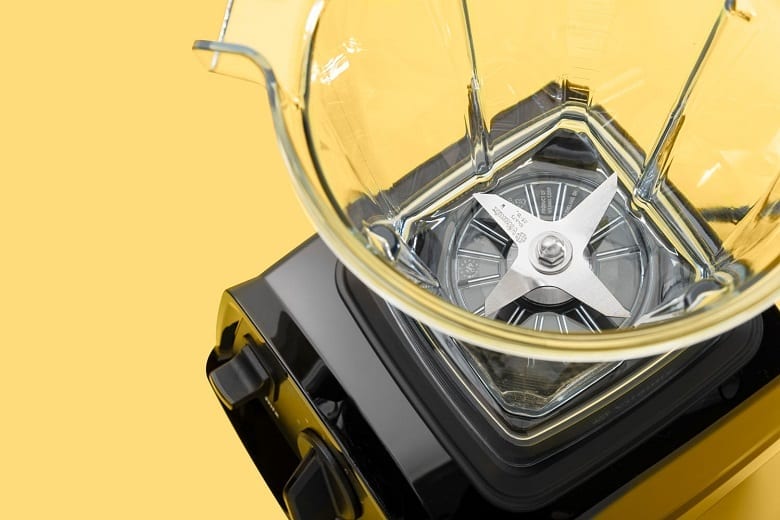
In this category, you can group up the switches, buttons, or touchscreen display for your blender, the motor, and the wiring. That includes the power cable that runs to the wall.
When we discussed amps earlier, there’s one detail we left out: wider wires have more amp capabilities.
Right now, any 120 V appliance you have that’s plugged into the wall will only have a cord so thick.
If you look at the dryer in your laundry room, that’s running off a 240 V, and the cord is thick like rope.
That’s the physical presence of just how much energy is can draw.
All that power has to go to a motor, and the motor’s got to spin.
However, it also crosses wires with the user interface, being switches, buttons, and the touchscreen if your blender has one.
When you begin operating the blender, the user interface inputs tell the wires how much energy to draw, and then it kicks the motor on.
Your motor spins the blades.
The capability of the motor will determine how well it handles resistance from thick food and ice, while the power determines the RPM.
A higher RPM means it spins faster and cuts through more food, but a high RPM without a high amp draw wouldn’t really do much.
You can service your motor at home if you run into problems.
Some of those problems are easy enough to fix, even if you need to replace the wires. Use the manual that came with your blender to find out what the wires are, the specifications for them, or contact customer service for the blender brand.
They’re sure to have more information, and these short wires (ones that connect the panel to the motor) will be cheap as they come. Seriously, you’ll pay more on shipping than the sticker price.
How to Repair Your Own Blender at Home
No need to buy a new one (especially if it’s pricey).
If you can’t send it back due to an expired warranty, that’s okay. Blenders are simple enough to fix without a ton of know-how.
Let’s talk about what you need to get started, and tackle common reasons that blenders stop working.
First, let’s identify the problem. These are common issues, and reasons why they occur.
- If your pitcher starts to leak, your gasket could be on its way out. Gaskets are also called seals, which are rubber pieces on the bottom of your pitcher that keep liquid inside.
- If your motor is clearly on, but the steel blades aren’t doing anything, your drive stud (located in the motor housing) could be loose. It’s not transferring motor energy to the blades.
- If your blender automatically starts up the second you plug it in, check the buttons and make sure none are pushed in. You could have a bad series of wire connections that are ignoring user input.
- If your blender just straight-up doesn’t even work, it could be a wire connection as well. You can use a multimeter to check and see if any power is even being distributed.
Pitcher Leak Fix
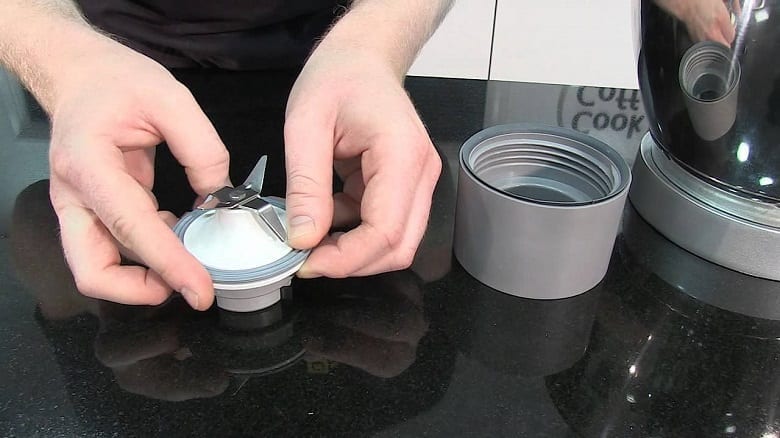
If you’re replacing a gasket on a blender, you need to unscrew the seal from the bottom of the blender pitcher.
Turning it counterclockwise should do the trick, though it might be a bit tricky.
You’ll be left with an empty pitcher with no blade base in it.
Now, you need to take the blade base out of the seal, and check the gasket. It’s a rubber ring that should be around the edge of the blade base.
If it looks worn or tattered, replace it. If not, flip it over and re-screw the seal onto the pitcher. Sometimes these move from constant vibrations and just need to be put back on track.
No Blade Spin Fix
You have to disassemble the motor base, and locate the drive stud.
Your manual will have pictures of where this is located when it explains the anatomy of your specific blender, so be sure to consult it.
Drive studs are different in every blender, but basically, it controls the contact between the blades and the rest of the motor.
Tighten it as much as you can without breaking anything, and that should do the trick. Loosely reassemble the blender during testing in case you need to open it back up again.
Automatic Startup
Something’s not right—some wires are crossed.
The electrical current is going straight to the wire instead of passing through the switches, making your panel of buttons or your touchscreen control essentially useless.
In this instance, it’s best to detect the specific wire. If you know that the highest spin mode is activated, it’s the wire that controls the RPM.
If it’s stuck in soup-only mode, it’s the wire that controls that. If one has gone, the others are likely to go out soon, so it might be worth it to just replace them all while you’re at it.
No Feedback
Nothing’s turning on, so you need to figure out the problem.
A multimeter should let you know where the current is stopping, which can help you better diagnose the problem.
In this instance, it’s best to return it to the manufacturer, or seek the repair of a professional.
This could be an issue with the actual wire that goes into the outlet.
Your Blender and Nutrition
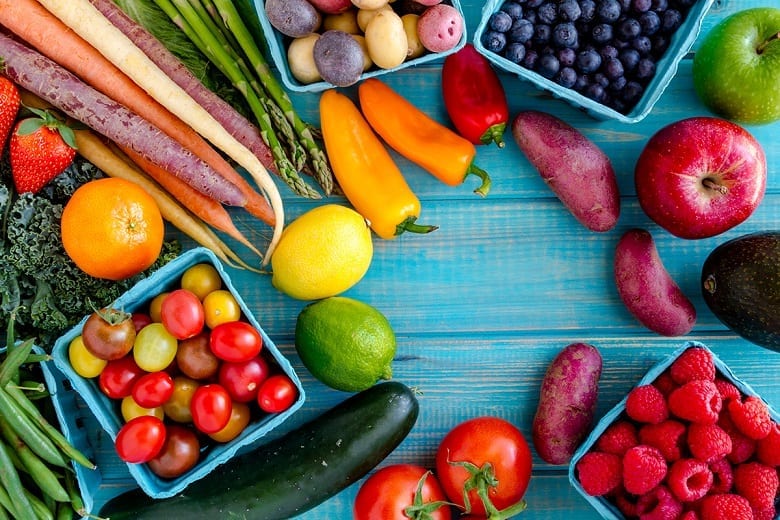
Blenders offer a much faster and better way of delivering nutrition straight into your body, without having to endure fibrous vegetables or fruits that you normally wouldn’t enjoy.
Blended drinks, whether they’re juice-based or full smoothies, mean that you can sneak in healthy and beneficial foods that supercharge your immune system without having to actually eat them.
Parents do it all the time, and children are none the wiser.
If you’ve ever read literature that regale smoothies as sugar-filled frozen juice drinks, there’s some truth to that.
Smoothies do have a lot of sugar in them, but it’s different than the sugar you’d find in a doughnut or cake. It’s not white refined sugar, it’s natural sugar that occurs in nature.
The difference is that your body processes it differently. It doesn’t stay around like processed sugar does, so your body will expel what it doesn’t need (unless you drink, like, six smoothies a day).
Smoothies are healthy for you. When it comes to weight loss, it’s all about counting calories, which is thankfully very easy to do with a smoothie.
You might have a couple hundred calories from fruit and vegetables, but you’ll end up with 32 ounces (four US cups) of a drinkable meal that will make you feel full, and even hydrate you.
It’s filling, unlike foods with a lot of carbohydrates and processed sugars.
The health benefits far outweigh the caloric value or sugar contents, though.
It’s almost sinful to have a smoothie without some form of a berry in it, and berries are high in antioxidants.
Those basically fight visible signs of aging (to a degree), and eradicate free radicals, which are cancer-causing cells in the human body.
But what about foods that aren’t smoothies?
There are benefits there as well.
There’s a reason that people go on blended diets, you know.
Nutrients are absorbed faster into your body, so you’re getting a supercharge of what you need from the moment it hits the sidewalls of your mouth.
Your body absorbs it, and can feel fuller faster, so you’re less prone to snacking later on.
It’s also easy on your digestive system.
One of the key reasons that blending is often better than juicing (though juicing has its benefits as well), is because you retain all the fiber of whatever you put in.
Only 5% of Americans get their daily recommended dosage of fiber, so it’s something that we could all be getting a bit more of.
Last but not least, it’s also better for dental health.
Yes, there’s a lot of sugar that could hit your teeth, but it’s all blended up: what’s going to really stick to, or get caught in between your teeth?
It’s easier to maintain your dental health when you enjoy a blended diet.
Why Did Blenders Get so Popular?
Nutrition was a big reason. You have smoothie trends take over for a while, and the only way to make a good smoothie at home was with a blender.
Apart from that, they were actually used by doctors nearly eighty years ago. They would prescribe malted beverages to patients who were suffering with excessively low weights in order to bring their BMI into a healthy range.
Apart from all that, they’re simply versatile as can be. You don’t have to really know how to use one: the instructions are super simple.
You can burn a roast in the oven or overpop your popcorn in the microwave, but what can you really mess up in a blender?
Apart from letting a smoothie melt or forgetting to put the lid on, it’s a fairly foolproof way to prepare food.
They also have a quick cleanup time.
Instead of doing four different pots and pans, plus plates and silverware, you could make a drinkable dinner and forego all the mess.
Pitchers were simple enough to rinse out, and meal times were reduced, so you could focus on what you loved instead of spending twenty minutes at the table.
It was about convenience, and having something simple to add to your home. Now, they’re a staple in almost every single home across America.
Can You Make Every Meal in a Blender?
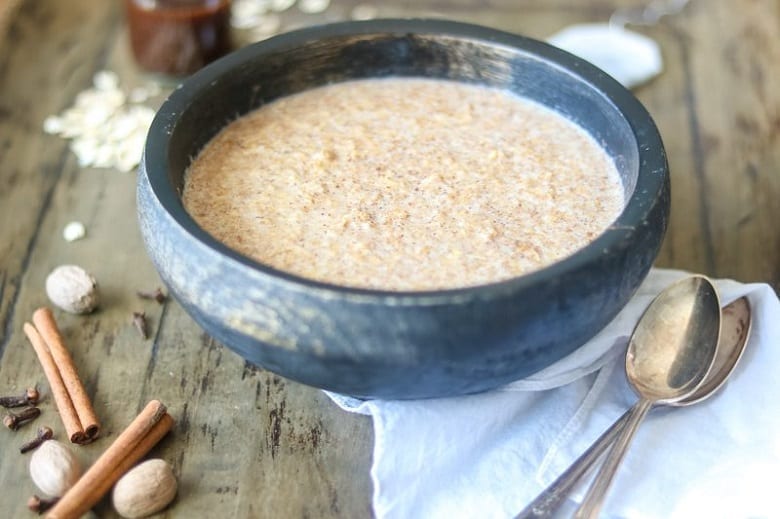
There’s a way to make breakfast, lunch, dinner, snacks and desserts, all in a blender.
It depends on how powerful and dependable it is, but you can make scrambled eggs for breakfast, soup for lunch, and mix up a meatloaf for dinner.
Some recipes can be heated with the capabilities of the blender, though many will require a stove or oven to finish them.
Blenders will reduce your overall meal preparation time though, especially for breakfast dishes. What’s better than homemade buttermilk pancakes that didn’t come out of a box?
Making the batter in record time. With some creativity, every meal can be made in a blender.
Why Are Some Blenders so Expensive?
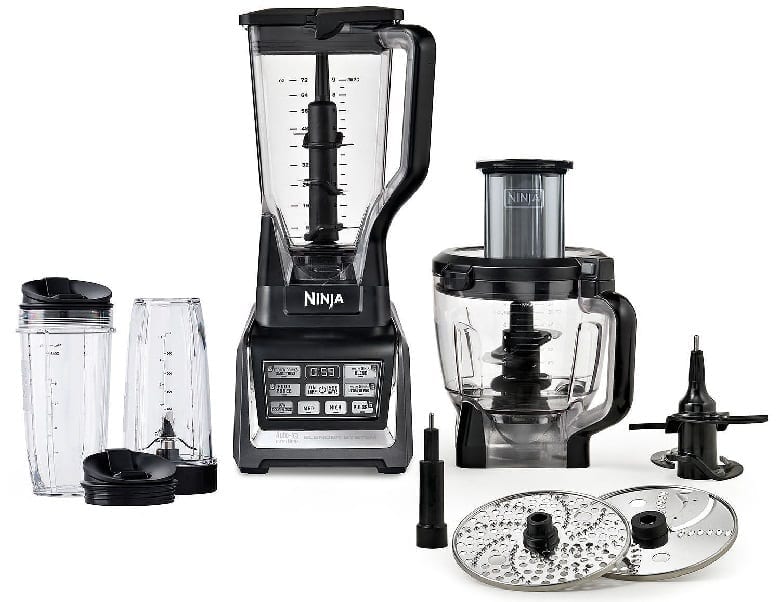
You get what you pay for—that’s an oldie, but a goodie.
What do you really expect to get for a $20.00 blender on the department store shelf?
Maybe enough power to make some smoothies, and a ridiculously loud motor that makes your ears vibrate.
That’s all you really should expect from that.
Expensive blenders offer more than a headache and some questionably thick smoothies—there’s soup making options, puree choices, stronger motors, bigger pitchers, and smoother foods that come out of shorter blending cycles.
A motor is a motor; it’s going to be loud, but some higher end models use soundproof foam padding on the interior of the motor housing to muffle the sound, and reduce the decibel rating so you’re not left needing Advil because you wanted to make some pesto.
Brands also matter, especially for appliances. Vitamix, Ninja, BlendTec and other brands have their own dedicated customer support teams that know these products inside and out, and offer crazy long warranties.
For example, most Vitamix blenders have either a 7-year or a 10-year warranty that covers just about everything outside of pitcher replacements. What did you get with the department store model?
A 30-day money-back guarantee? Better cash in on that before it runs out.
Blenders Are a Kitchen Investment
If you don’t have a blender already and you’re looking at this before getting one, just understand that this is an investment, not a simple purchase.
Small appliances are often thought to be less durable than major appliances (fridges, stoves, etc.), but they can actually last longer, even with prolonged and extended use.
Getting the right blender is a matter of finding what you need, figuring out how much you’ll use it, and defining the parameters of your budget accordingly.
Now that you know everything you need to know about blenders, what will you create?
Subscribe To Stumpf Studio Newsletter
By entering your email address you agree to get email updates from Stumpf Studio. We'll respect your privacy and unsubscribe at any time.
